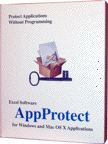-
Unlike other things you buy, you do not own software that you paid for.
 As a licensed user, you purchased the right to use the software on one computer, at one location or as otherwise stipulated by the conditions and restrictions of the software license. Whether software piracy is deliberate or not, it is illegal and punishable by law.
As a licensed user, you purchased the right to use the software on one computer, at one location or as otherwise stipulated by the conditions and restrictions of the software license. Whether software piracy is deliberate or not, it is illegal and punishable by law.
Software piracy puts the user and organization at great financial and legal risk. However, piracy detection and enforcement varies greatly in different industries and countries. To protect their intellectual property and revenue, software vendors apply protection and activation procedures to their commercial products.
Software Protection Myths
- Software piracy is a victimless crime. - In some markets, over 90% of software is unlicensed. Illegal software costs developers over $50 billion a year in lost revenue. Software piracy equals lower wages, lost jobs and less investment in future enhancements.
- Protection interferes with legitimate use. - With a simple, automated activation process, a user can securely activate a software license in seconds. Given that many commercial applications require activation, users often expect it. Since organizations are legally liable for the software they purchase, they may prefer or even require it.
- Protection makes software more expensive. - Competitive forces in any market ultimately set the price for software based on the total revenue collected less the development cost. When piracy dramatically reduces the revenue base for a software product, legitimate users must pay a substantially higher price. The incremental cost of protection is relatively insignificant and leads to larger volumes, lower unit costs and higher revenues.
- Inexpensive software is not copied. - Software pirates often claim that if you lower the price of software, more users will purchase it rather than copy it. The evidence proves otherwise. Less expensive software often serves a more general audience or less sophisticated users and is more likely to be copied, distributed and used illegally.
- Protection can be cracked. - In theory that may be true, but irrelevant. Software has a time value. If it takes months or years to crack, the software will likely be replaced by a newer, more capable edition. If it costs $100,000 to develop and $200,000 to crack an application, it would be more cost effective for the hacker to develop it from scratch. Piracy is often a crime of convenience. If it is easy to buy and activate a license, but costly, time consuming and risky to pirate it, users choose the path of least resistance.
Software Protection Tools

 Software vendors protect Macintosh and Windows software with AppProtect or QuickLicense. Both tools can wrap a desktop application with an activation process that requires no programming.
Software vendors protect Macintosh and Windows software with AppProtect or QuickLicense. Both tools can wrap a desktop application with an activation process that requires no programming.QuickLicense also has a programming interface to protect plugins, DLLs, etc. It offers extensive customization, other license types (trial, product, subscription, floating, etc.) and advanced features.
Learn more about software piracy at the Business Software Alliance.